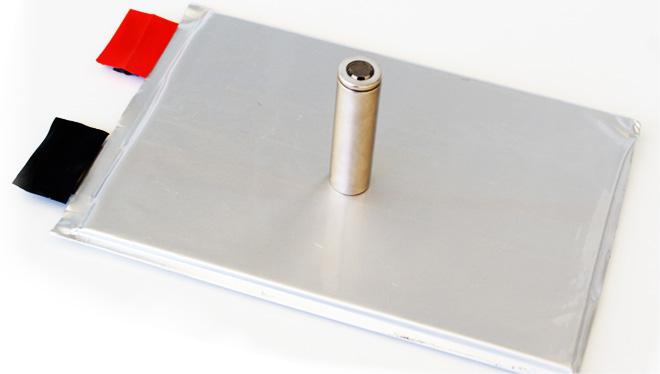A team led by celebrated battery boffin Professor Jeff Dahn at Dalhousie University has demonstrated that a common electrolyte additive is detrimental for Li-ion cells at high voltages, and suggest some alternatives.
Dahn and his team discuss their latest work in two papers: “Enabling linear alkyl carbonate electrolytes for high voltage Li-ion cells,†published in the Journal of Power Sources; and “Some Fluorinated Carbonates as Electrolyte Additives for Li(Ni0.4Mn0.4Co0.2)O2/Graphite Pouch Cells,†published in the Journal of the Electrochemical Society.
Conventional Li-ion batteries contain ethylene carbonate (EC), which has been considered essential for the passivation of the graphite electrode’s surface during the first cycle. However, the cycling performance of cells using these carbonate-based electrolytes has been poor at higher voltages. Left-over EC in the electrolyte may be continuously oxidized, resulting in salt consumption, gas evolution and impedance growth, all of which reduce energy density and cell life.
Dahn and his team recently showed that the removal of EC from carbonate-based electrolytes yielded high voltage Li-ion cells with longer life spans. They have also found that EC-free-linear alkyl carbonate-based electrolytes with a small amount of an “enabler†such as vinylene carbonate (VC) allowed cells to be cycled up to 4.4 V with longer cycle and calendar life.
“In this paper, four ‘enablers’ including EC, VC, FEC and DiFEC were compared head to head in NMC442/graphite pouch type Li-ion cells,†write the researchers. “Experiments were made using ultra high-precision coulometry, a precision storage system, electrochemical impedance spectroscopy and a gas measurement. Gas evolution during formation and cycling, coulombic efficiency, charge endpoint capacity slippage during cycling and EIS spectra before and after cycling were examined and were compared to EC-based electrolyte with some promising additive blends.â€
“The work in this paper suggests that EC itself is the root cause of many issues associated with the operation of NMC/graphite cells to high potential [and] that cyclic carbonates such as VC, FEC and DiFEC can act as the enablers for EMC-based electrolytes which function well in NMC442/graphite cells tested up to 4.4 or 4.5 V.â€
Source: ChargedEVs



